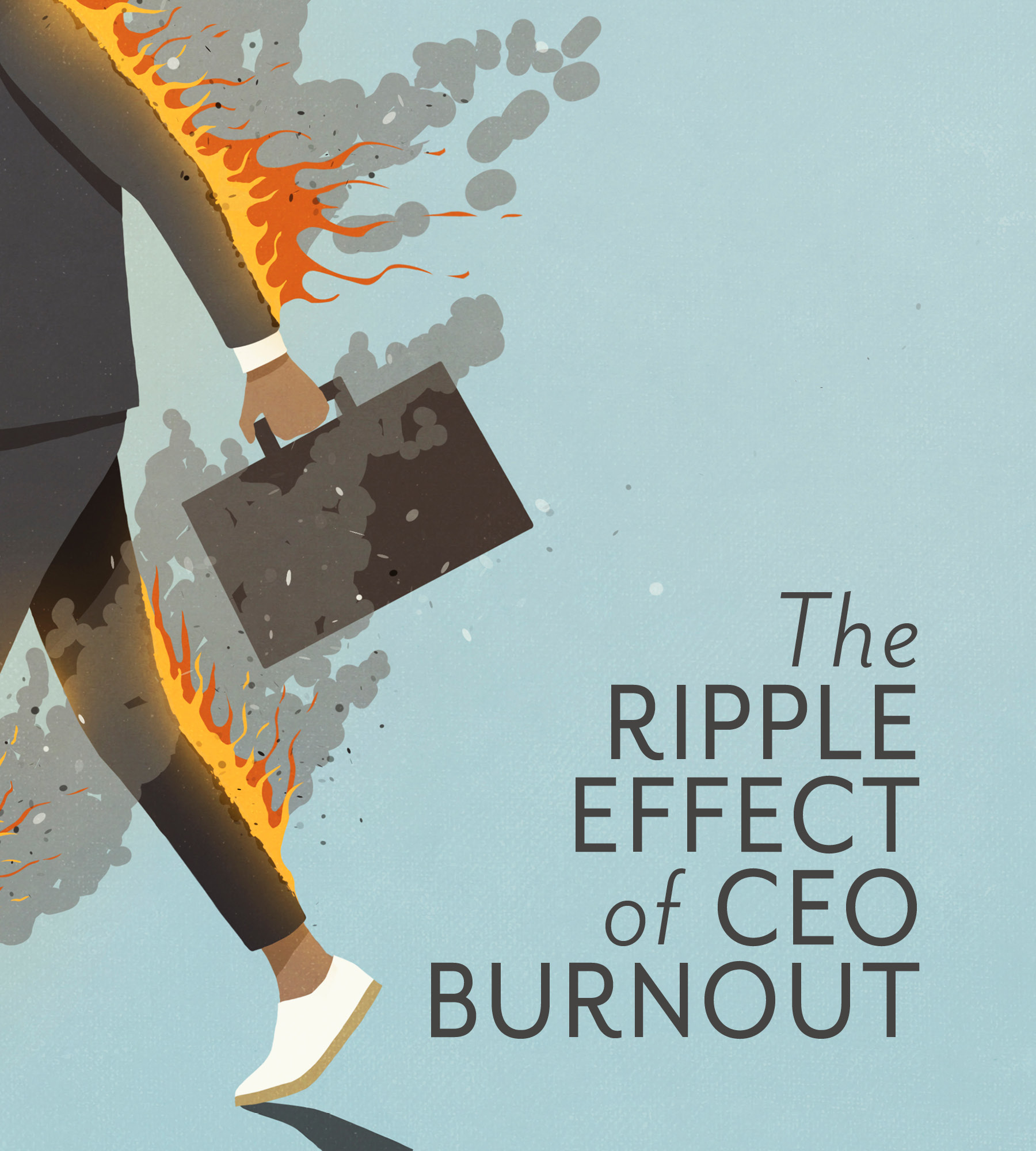Language
You can read the magazine in one of the following languages
Geolocation
You can read the global content or the content from your region

Though there is an increasing demand for workforce wellbeing, a crucial factor for success has been overlooked: C-suite executives’ own wellbeing. With executives experiencing burnout’s damaging impacts at similar rates to employees, and CEOs quitting at the highest rates on record and leaders facing historically high stress rates, it’s imperative to give greater attention to how executives can overcome burnout.
Executives are expected to lead efforts to improve workforce wellbeing and see that employees thrive, regardless of their own wellbeing. However, until there is more emphasis on how executives can themselves thrive, progress toward organizational wellbeing will be minimal at best, and at worst, it will continue to decline.

Having the space to plan and think is one of the keys to top performance.
As a public company CEO Coach and positive organizational psychologist, I have studied and researched leaders and teams for more than two decades. In a recent study, I interviewed 20 Fortune 1000 CEOs to understand what leadership performance looks like when executives are thriving versus when they’re burned out.
Based on my research and experience, I constantly see the detrimental impacts of executive burnout: harm to their health, total exhaustion, breakdowns in relationships, decreased productivity and the inability to think clearly. Executive burnout is not only harmful to the individual – it is destructive to their teams and organizations.
The excuse I hear as to why executives don’t take care of themselves is the demands on them are too high. The corporate perception is that the “busy badge” is the greatest sign of performance. In fact, my research shows the opposite: having the space to plan and think is one of the keys to top performance.
I have discovered a solution for leaders to not only overcome burnout, but to lead at their peak in a highly competitive global market: Vital Leadership.
Vital Leadership places caring for yourself first, through cultivating your wellbeing, as foundational to maximizing leadership capacity. This is a paradigm shift from what executives are taught.
When leaders cultivate their own wellbeing, it builds their vitality, giving them access to an abundance of energy. Highly vital leaders tap into their inner physical, emotional and psychological energy to lead at their best.

Executives suffering from burnout operate with reduced productivity, create negative environments and have an adverse ripple effect on the organization.
The results of my study interviewing CEOs highlight the striking disparity between highly vital versus depleted executives. On one end of the spectrum, Vital Leadership creates the highest leadership capacity, improves team performance and helps organizations to thrive. In contrast, executives suffering from burnout operate with reduced productivity, create negative environments and have an adverse ripple effect on the organization.
Specifically, the results of my study revealed how highly vital CEOs positively impact others with their leadership.
Here are the top three themes:
· 65 percent of CEOs are positive energizers in the workplace, who encourage, empower and energize their team and organization.
· 60 percent of CEOs create a positive environment for their team and organization, by encouraging others and positively inspiring and elevating their team’s environment.
· 35 percent of CEOs show curiosity through active listening, being inclusive and focusing on the development of others.

40 percent of CEOs are negative energizers in the workplace, who drain, discourage and demoralize their team and organization.
In contrast, according to this study, when CEOs are depleted, the top three ways it negatively impacts their leadership are:
· 60 percent of CEOs become closed off, by being abrupt in their communications, uninterested in others and impatient.
· 60 percent of CEOs create a negative environment for their team, through discouraging others, being irritable, visibly stressed, using sarcasm and expressing more negativity.
· 40 percent of CEOs are negative energizers in the workplace, who drain, discourage and demoralize their team and organization.
The exhausting nature of everyday leadership adds pressure to overloaded executives. Leaders must routinely exhibit behaviors that are depleting. On a daily basis, this study’s results show the five highest drainers to CEOs’ energy are:
· 85 percent feel a lack of control over their job and schedule.
· 70 percent act in ways that do not necessarily reflect how they feel.
· 65 percent deal with the impact of unproductive, negative mindsets.
· 45 percent repress or defer their own needs.
· 30 percent feel isolated in the CEO role.
Amid the damage caused by burned-out executives’ negative leadership behaviors, plus the constant drains of leadership, it’s critical to focus on how leaders can foster Vital Leadership to lead at their full potential.
As a leader, how could you develop your own Vital Leadership? Promoting your wellbeing is how you get your main source of energy to lead at your highest capacity. Focus on what replenishes your own physical, psychological and emotional energy every day. This is an individual experience. It is up to you to determine what fills your energy. The following questions could help you work this out:
· What brings you physical, psychological and emotional energy? Brainstorm to create a list, including things you are currently doing, used to do, or want to try.
· How could you integrate what gives you energy into your life more consistently?
· What’s one step you could take to refill your energy?

Focus on what replenishes your own physical, psychological and emotional energy every day. This is an individual experience.
The top strategy in each category from the CEOs I interviewed include:
· Emotional: 100 percent prioritize relationships in their lives that bring them joy.
· Physical: 85 percent care for their overall physical health, through exercise, movement, nutrition and sleep.
· Psychological: 75 percent intentionally create space in their day to plan, think and accomplish work.
I have consistently witnessed the transformation that occurs when executives embrace Vital Leadership: improved health, abundant energy, enriched relationships, increased productivity and retained enthusiasm and mental agility to excel in their roles.
Vital Leaders are high performers, who create extraordinary results for the organization. To increase workforce thriving, it’s imperative to foster executive wellbeing through Vital Leadership.

Jamie Shapiro
Contributor Collective Member
Jamie Shapiro is a master-certified executive leadership coach and organizational psychologist who specializes in working with CEOs of public companies and their executive teams. She is the CEO and Founder of Connected EC, a C-suite executive coaching company, and the author of ‘Brilliant: Be the Leader Who Shines Brightly Without Burning Out’. For more information about Connected EC, visit https://www.connectedec.com/